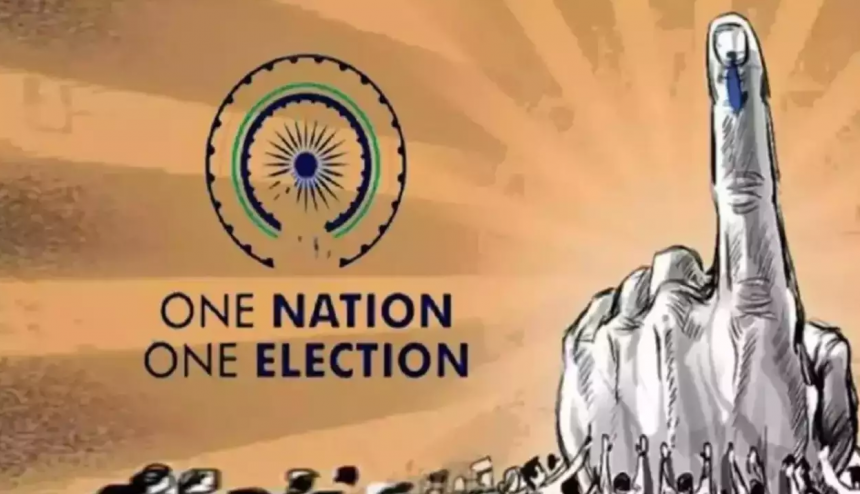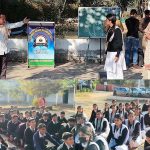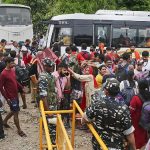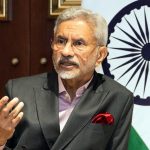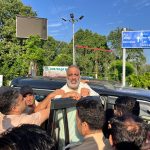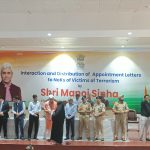Two key bills aimed at establishing a framework for simultaneous elections across India have been introduced in the Lok Sabha. The Constitution (One Hundred and Twenty-Ninth Amendment) Bill, 2024, commonly referred to as the “One Nation, One Election” bill, and the Union Territories Laws (Amendment) Bill, 2024, were tabled for consideration. In a division vote, 269 members supported the bill’s introduction, while 196 opposed it. The next step involves a likely 31-member JPC examining the proposed amendments and consulting stakeholders, including legal experts, MPs, former Election Commission members etc. The JPC, comprising 21 members from the Lok Sabha and 10 from the Rajya Sabha, will be finalized by the Speaker Om Birla. Several Opposition leaders, Congress Party in particular, are opposed to the bills. The Bills were introduced by Union Law Minister Arjun Ram Meghwal who termed objections to the bills as political in nature.
ONOE Explained
‘One Nation, One Election’ is a proposal that will synchronize all elections in the country either on a single day or within a specific time frame. One of its most notable proposals is to simultaneously conduct elections to the Lok Sabha & state legislative assemblies of all 28 states & 8 union territories. Remember first several general elections post-independence were held simultaneously, with the state legislative assembly elections. This practice continued till 1967. The cycle was disrupted due to the premature dissolution of some State Assemblies in 1968-1969.
In 1970, the Lok Sabha was dissolved before completing its term, leading to separate election cycles for the Lok Sabha and various State Assemblies. Primary reason for this was the internal power struggle of Congress between the Nehru-Gandhi family and others. Several attempts were made to Revisit ONOE. 170th Report of the Law Commission of India (1999) and Parliamentary Standing Committee (2015) advocated simultaneous elections, emphasizing the reduction of election-related disruptions and costs. NITI Aayog Report in 2017 proposed a roadmap to reintroduce ONOE. Since 2014, PM Narendra Modihas been espousing simultaneous elections stating that it will reduce wastage of public money, and will ensure the smooth flow of development work, which otherwise gets arrested when the model code of conduct is in force.
Systematic Homework
In August 2018, the Law Commission of India stressed need to make appropriate amendments to the Constitution, the Representation of the People Act 1951, and the Rules of Procedure of Lok Sabha and state Assemblies. The commission said that it will lead to the saving of public money, reducing the strain on the administrative setup and security forces, timely implementation of government policies, and administrative focus on development activities rather than electioneering. On September 2, 2023 government constituted a High level Committee under chairmanship of Former President of India Sh. Ramnath Kovind. Other key people in this were sh. Amit Shah, Ghulam Nabi Azad, N.K Singh, Dr.Subhash, C.Kashyap, Harish Salve and Sanjay Kothari. The committee was tasked to suggest a framework for synchronization of elections and specifically, suggest the phases and time frame within which simultaneous elections may be held and also suggest any amendments to the Constitution and other laws in this regard and propose such rules that may be required in such circumstances.
The committee submitted its 18,000 pages long final report to the President of India, Smt. Draupadi Murmu on 14th March 2024. Among many things, the report suggested setting up an ‘Appointed Date’ after the upcoming general elections to mark the new electoral cycle from 2029. While a total 47 political parties submitted their views out of them 32 parties are supporting the One Nation One Election move, 15 others are opposing it. Fence sitters have also backed the legislation that would enable simultaneous elections to the Lok Sabha as well as state assemblies. A total of 18 amendments to the Constitution, most importantly Article 83(concerning duration of the Houses of the Parliament) & Article 172(concerning duration of the state legislative assemblies) are required. States are required to ratify amendments to Article 324A (to allow simultaneous elections in panchayats & municipal bodies) & Article 325 (to empower the Election Commission of India for creating a common electoral roll & voter IDs with the help of the state election commissions) passed by the Parliament.
The bill was cleared by the Cabinet on 12th December and a copy circulated on the night of December 13.The first phase of the plan according to the Bill will align the election dates for the Lok Sabha and state assemblies. Subsequently, municipal and panchayat elections will be synchronised with these, taking place within 100 days in the next phase of the plan. Bill proposes declaration of the date on which the Lok Sabha convenes as the ‘appointed date’, ensuring continued synchronization. Newly-formed state assemblies will have a shortened term to coincide with the next general elections. Article 324A has been proposed to be inserted into the constitution to facilitate simultaneous elections for Panchayats and Municipalities. Article 325 will be amended to create a unified voter roll and photo ID card for all elections. In the event of a hung house or no-confidence motion, new elections will be called, but the term of the newly elected house will only extend until the next general election.
Rationale for Simultaneous Elections
Findings of the report issued by the High-Level Committee on simultaneous Elections reveals that due to the on-going cycle of elections in various parts of the country, political parties, their leaders, legislators, and both State and Central Governments often focus their efforts on preparing for upcoming elections rather than prioritizing governance. The adoption of simultaneous elections would refocus the government’s attention towards developmental activities and the implementation of policies aimed at promoting the welfare of the masses. ONOE prevents the need for frequent deployment of a substantial number of personnel for election duties, such as polling officials and civil servants allowing government officials and public institutions to focus more on their primary roles rather than election-related tasks. It also fosters a political environment where local issues are not overshadowed by national election campaigns, thus preserving the relevance of regional voices.
Conducting elections simultaneously entails a more equitable allocation of political opportunities and responsibilities within political parties leading to greater diversification and inclusivity among political workers. Simultaneous elections can drastically cut down the enormous financial burden on the government and political parties. It is estimated that diminishing the frequency of elections could result in savings ranging from Rs 7,500 crore to Rs 12,000 crore. ONOE model reduces the expenditure related to the deployment of resources like manpower, equipment, and security for each individual election. The economic benefits include a more efficient allocation of resources and better fiscal management, fostering a conducive environment for economic growth and investor confidence.
Conclusion
Elections across the world democracies have become very expensive. According to a study report around 35% of money is spent on campaigns and publicity, while a substantial amount is reportedly distributed among voters. Such increased expenditure that is met primarily through large donations creates an unholy nexus between the elected representatives and donors who seek favours later on. It also creates an entry barrier into electoral politics for many well-meaning citizens.
ONOE can re-energize the democratic process, potentially boost overall turnout. It will also consolidate deployments of security forces into a single cycle, ensuring better utilization of resources and enhanced national security preparedness. Frequent elections also disrupt local economies through extended bans on business activities, such as transport restrictions, and labor diversions. ONOE addresses it significantly. In short, synchronized elections would allow parties to dedicate their efforts to addressing the needs of the electorate, focus on governance, reducing instances of conflicts and aggressive campaigning.
(Author is former member of the Legislative Council of J&K and spokesperson of BJP)


